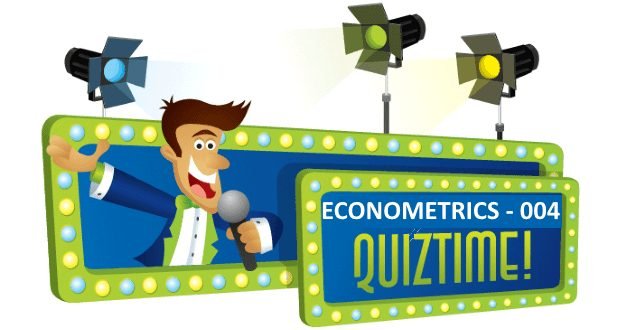500 câu trắc nghiệm Kinh tế lượng – 12C

Solve the problem.
7) The Mann-Whitney U test is equivalent to the Wilcoxon rank-sum test for independent samples in the sense that they both apply to the same situations and always lead to the same conclusions. In the Mann-Whitney U test we calculate
\(z = \frac{{U – \frac{{{n_1}{n_2}}}{2}}}{{\sqrt {\frac{{{n_1}{n_2}({n_1} + {n_2} + 1)}}{{12}}} }}\)
where \(U = {n_1}{n_2} + \frac{{{n_1}({n_1} + 1)}}{2} – R\)
For the sample data below, use the Mann-Whitney U test to test the null hypothesis that the two independent samples come from populations with the same distribution. State the hypotheses, the value of the test statistic, the critical values, and your conclusion. Use a significance level of 0.05.
| Test scores (men): | 70, | 96, | 77, | 90, | 81, | 45, | 55, | 68, | 74, | 99, | 88 |
| Test scores (women): | 89, | 92, | 60, | 78, | 84, | 96, | 51, | 67, | 85, | 94 |
H0: The two samples come from populations with the same distribution.
H1: The two samples come from populations with different distributions.
Critical values z = ±1.96, R = 115.5.
Test statistic: z = 0.39
Do not reject the null hypothesis. There is not sufficient evidence to reject the claim that the two samples come from populations with the same distribution.
Use a Kruskal-Wallis test to test the claim that the samples come from identical populations.
8) SAT scores for students selected randomly from three different schools are shown below. Use a significance level of 0.05 to test the claim that the samples come from identical populations.
| School A | School C | School B |
| 550 480 670 | 500 620 700 | 460 580 620 |
| 400 600 520 | 550 760 | 380 600 470 |
| 450 |
Test statistic: H = 3.6586. Critical value is 5.9915.
Fail to reject the null hypothesis. There is not sufficient evidence to warrant rejection of the claim that the samples come from identical populations.
Use the rank correlation coefficient to test the claim of no correlation between the two variables.
9) Given that the rank correlation coefficient, rs, for 20 pairs of data is 0.720, test the claim of no correlation between the two variables. Use a significance level of 0.05.
rs
= 0.720. Critical values: rs
= ±0.450.
Significant correlation. There appears to be a correlation between the two variables
10) Given that the rank correlation coefficient, rs, for 15 pairs of data is -0.602, test the claim of no correlation between the two variables. Use a significance level of 0.01.
rs = -0.602. Critical values: rs = ±0.689.
No significant correlation. There does not appear to be a correlation between the two variables
11) Use the sample data below to find the rank correlation coefficient and test the claim of no correlation between math and verbal scores. Use a significance level of 0.05.
| Mathematics 347 440 327 456 427 349 377 398 425 |
| Verbal 285 378 243 371 340 271 294 322 385 |
rs = 0.867. Critical values: rs = ±0.683.
Significant correlation. There appears to be a correlation between the two variables
Use the runs test to determine whether the given sequence is random. Use a significance level of 0.05.
12) Answers to a questionnaire were in the following sequence. Test for randomness.
Y Y N Y N N N N Y Y
N N N N Y Y Y N N N
n1= 8, n2= 12, G = 8, 5% cutoff values: 6, 16.
Fail to reject the null hypothesis of randomness.
13) A sample of 15 clock radios is selected in sequence from an assembly line. Each radio is examined and judged to be acceptable (A) or defective (D). The results are shown below. Test for randomness at the 0.05 level.
D D A A A
A A A A A
A A D D D
n1= 5, n2= 10, G = 3, 5% cutoff values: 3, 12.
Reject the null hypothesis of randomness.
14) A pollster interviews voters and claims that her selection process is random. Listed below is the sequence of voters identified according to gender. At the 0.05 level of significance, test her claim that the sequence is random according to the criterion of gender.
M, M, M, M, M, M, M, M, M, M, M, M, F, F, F, F,
M, M, M, M, M, M, M, M, M, M, F, F, F, F, F, F
n1= 22, n2= 10, G = 4, \({\mu _G}\) = 14.75, \({\sigma _G}\) = 2.38.
Test statistic: z = -4.52. Critical values: z = ±1.96.
Reject the null hypothesis of randomness. The sequence does not appear to be random.
MULTIPLE CHOICE. Choose the one alternative that best completes the statement or answers the question.
Solve the problem.
15) When performing a rank correlation test, one alternative to using Table A-9 to find critical values is to compute them using this approximation:
\({r_s} = \pm \sqrt {\frac{{{t^2}}}{{{t^2} + n – 2}}} \)
where t is the t-score from Table A-3 corresponding to n – 2 degrees of freedom. Use this approximation to find critical values of rs for the case where n = 7 and \(\alpha \) = 0.05.
○ ± 0.669
○ ± 0.448
○ ± 0.569
● ± 0.755